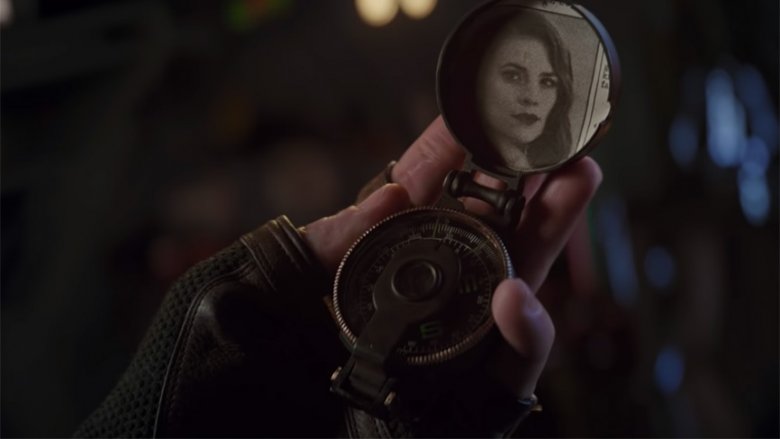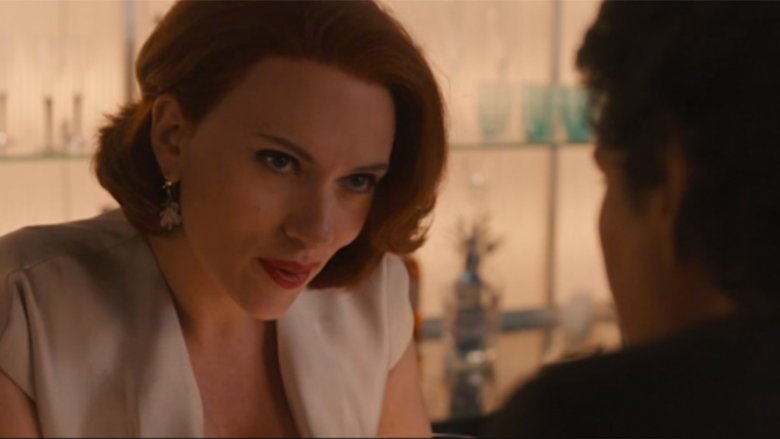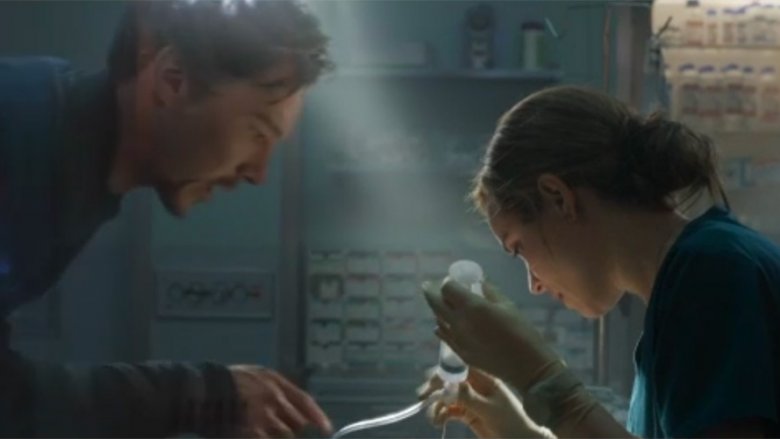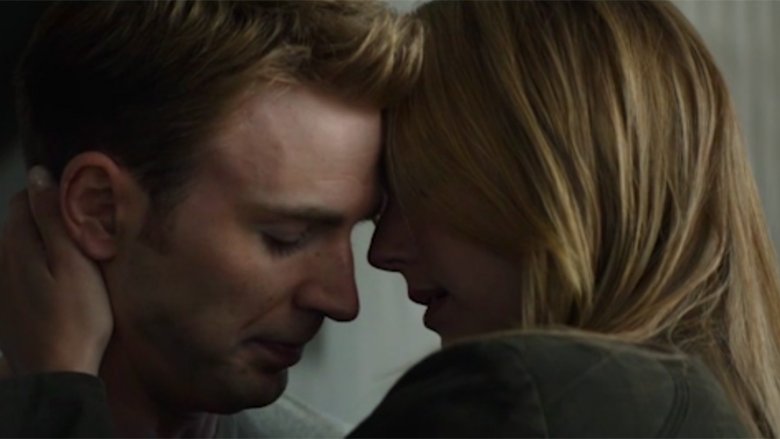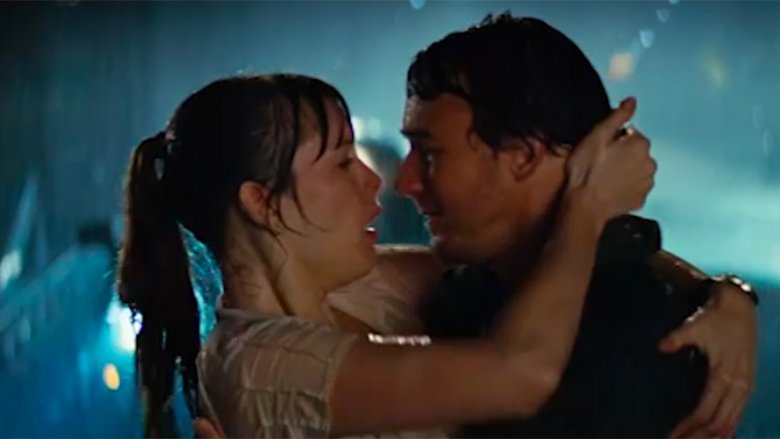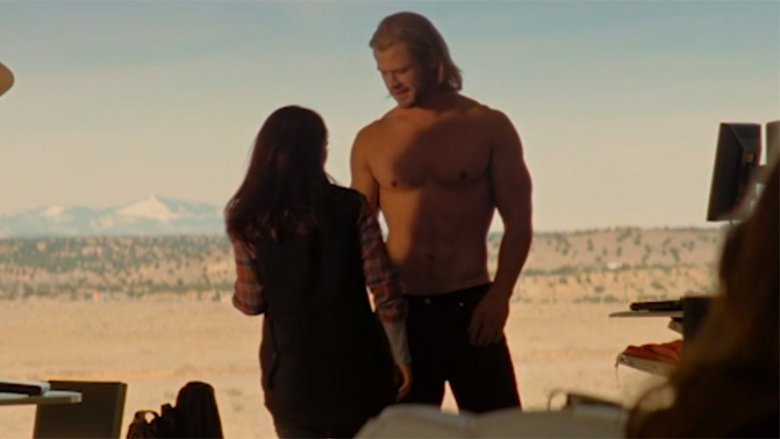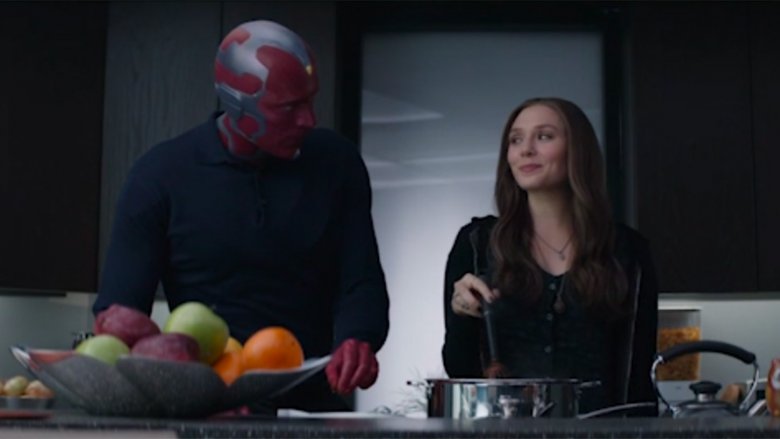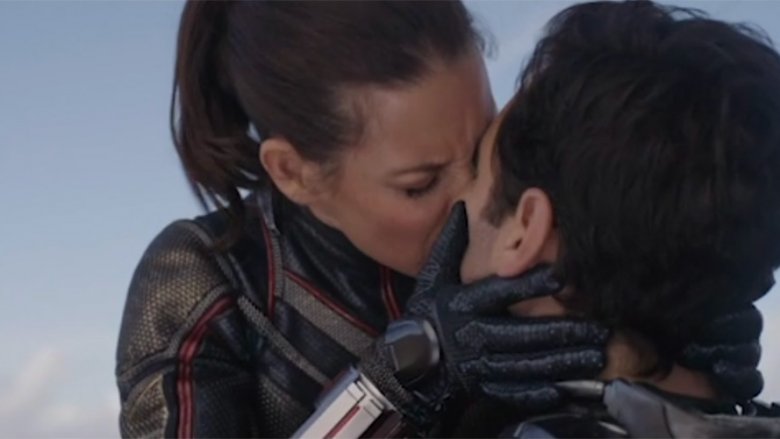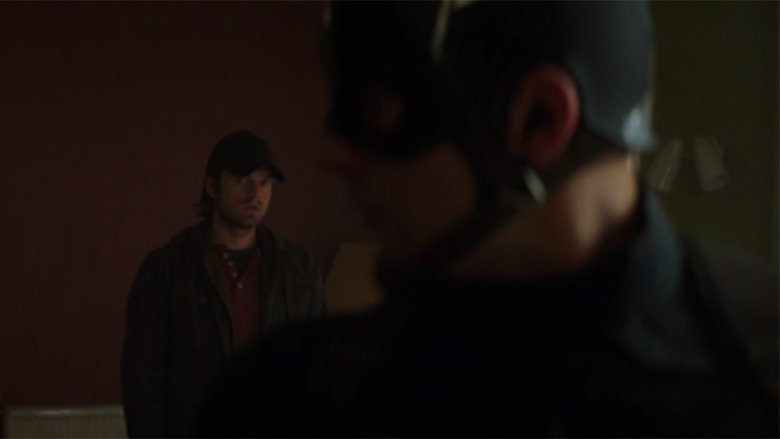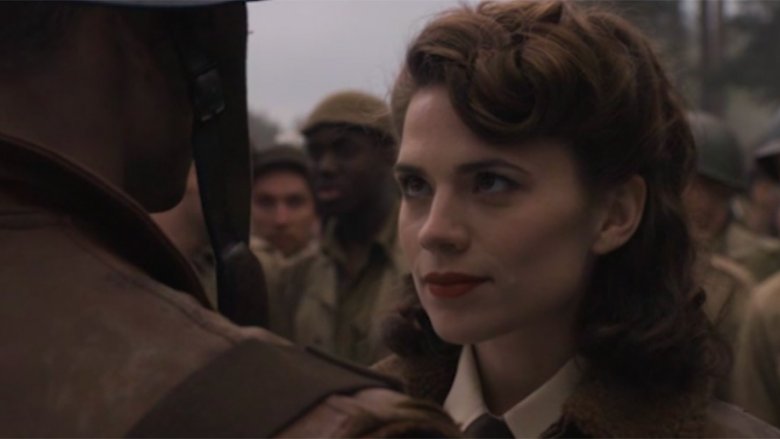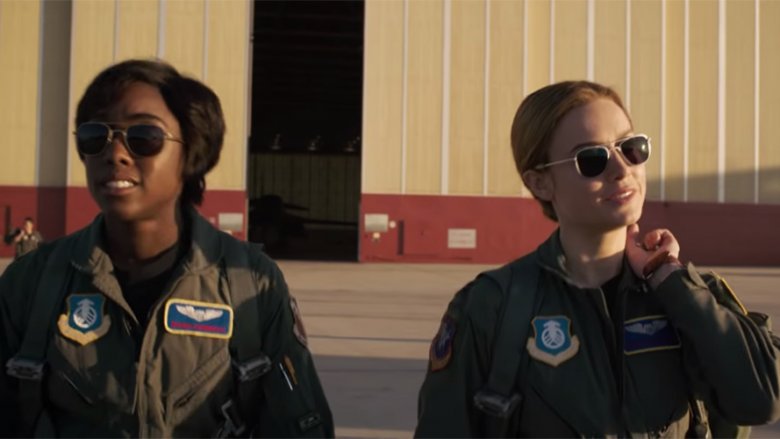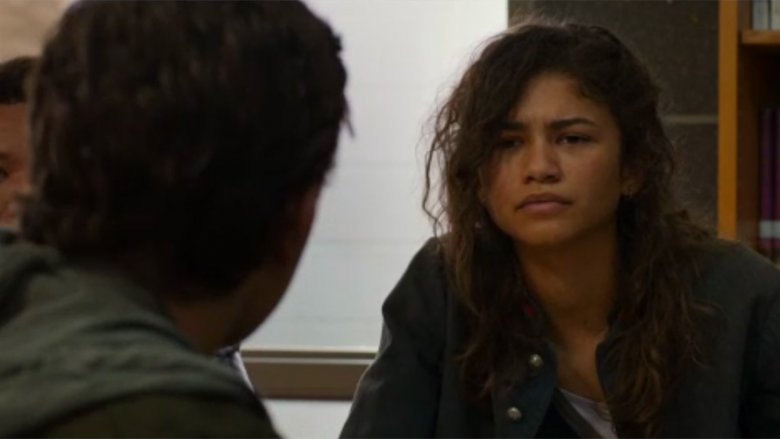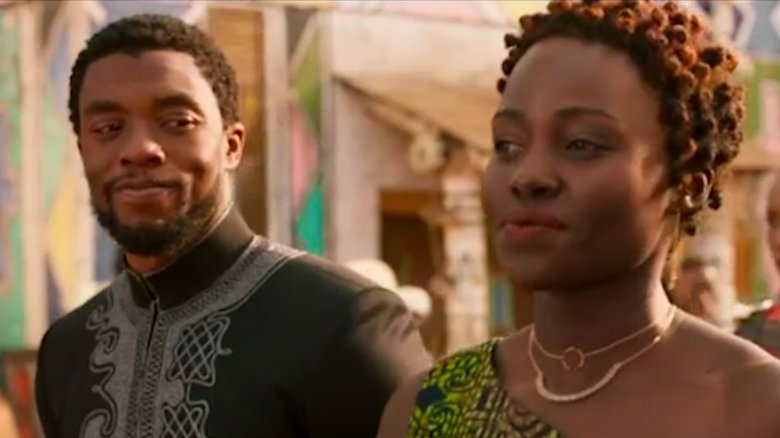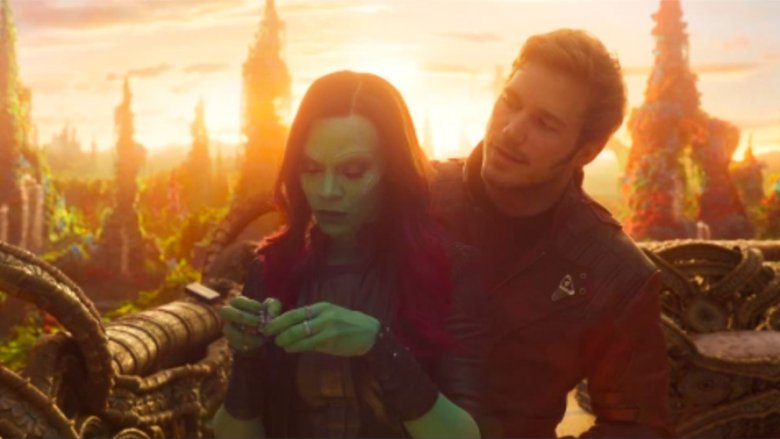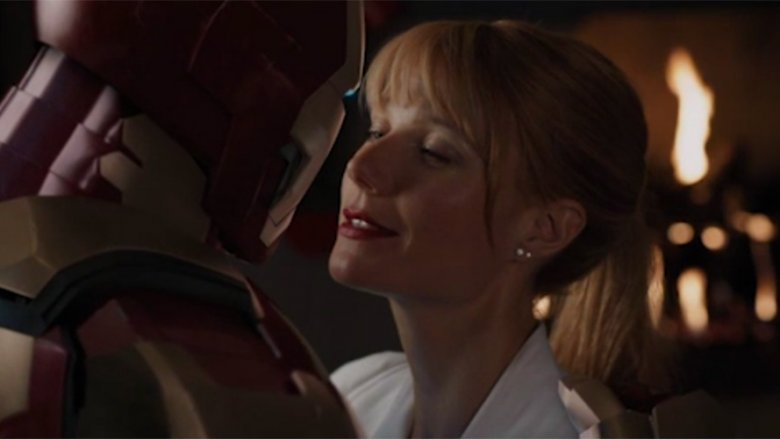Every Romance In The MCU Ranked From Worst To Best
When you think of the Marvel Cinematic Universe, you probably think of the bombastic, superheroic action, interweaving stories, and maybe even the touch of comedy that makes those superheroes so easy to like. There is, however, another element to the MCU tugging at those gamma-powered, iron-plated, super-soldier heartstrings: romance!
Yes, much like the dust that used to be Peter Parker at the end of Infinity War, love is in the air in the MCU. It's often overlooked, though, and if you take a look at the couples that have emerged over the past 11 years, you'll find that there's a pretty good reason for that. Despite playing a part in almost every movie in the franchise, the romances aren't always that great, and occasionally fall into being full-on terrible. As for which loves conquer all and which should've been shipped off to Dumpsville, suit up and gaze longingly at your favorite hunky Chris as we rank every romance in the Marvel Cinematic Universe.
Bruce Banner and Natasha Romanoff
With a good cinematic romance, the audience should be asking questions like "will they finally get together?" or "how will their love endure through these obstacles?" When Black Widow and the Hulk started exchanging longing glances and morose pick-up lines in Avengers: Age of Ultron, however, the questions were more like "who asked for this?" and "no seriously, why did anyone think this was going to work?"
Unlike a lot of the MCU's romances, this one actually doesn't suffer from a lack of chemistry. Mark Ruffalo and Scarlett Johansson play off of each other very well, and they're skilled enough to make the most of what they have. Unfortunately, it's a "romance" that builds to a woman declaring herself to be a monster because she can't have children. It does make us understand the Hulk a little more, though — if we had to deal with this as our major character development, we would've flown off to space for two years, too.
Stephen Strange and Christine Palmer
Doctor Strange is a movie that makes some pretty weird choices. For one thing, it's full of characters that feel like stand-ins for the ones that fans would actually want to show up. Kaecilius, for instance, is a Z-lister that even die-hard Marvel fans would have a hard time placing, and only feels like he's there so that one of Strange's actual villains, Baron Mordo, can be saved for the sequel.
The same goes for Christine Palmer. While she was drawn from the comics, she's not Strange's primary love interest — that would be the sorceress Clea. Hell, she's not even the most prominent version of Night Nurse in print or the MCU, nor is she the one who was actually in a relationship with Strange in the comics. All of that could've been saved if their relationship had worked at all in the film, but instead, it feels like it's checking off an entry on a checklist of stuff that worked in Iron Man. Strange and Palmer might be gifted surgeons, but don't trust them to write you a prescription — they don't seem to know a thing about chemistry.
Steve Rogers and Sharon Carter
Despite being Captain America's longest-tenured love interest in the comics — eclipsing even Diamondback, the reformed snake-themed supervillain who gave us those beautiful years in the '90s where Cap was hanging out with a lady who sported a hot-pink undercut — the cinematic version of Sharon Cartner never really clicked. The Cap and Sharon of the MCU never really felt like they were in a romance; they were just two attractive blonde people standing vaguely near each other.
At the end of the day, Sharon was overshadowed at every turn. Emily Van Camp and Chris Evans had a fraction of the chemistry that Evans had with Anthony Mackie and Sebastian Stan, even with a single, very unconvincing kiss. With the literal spectre of her aunt Peggy hanging over her, this version of Sharon was never going to be anything more than a consolation prize, and never seemed to be portrayed as anything more, either.
Bruce Banner and Betty Ross
Hey, remember how there was an Incredible Hulk movie back at the dawn of the MCU? Remember how it was a foundational piece of the franchise, the second entry after Iron Man, proving that the films could actually interconnect and build to something bigger? No? That's okay, nobody else does either.
Among the movie's many forgotten pieces — here's your reminder that the Leader and the Abomination exist in the MCU — was the relationship between Bruce Banner and his long-time love, Betty Ross. It's exactly the kind of romance that could've been expanded on if there had been any more solo films for the Hulk, but when Mark Ruffalo took over the role and the Green Goliath became an ensemble player, Betty was left in the dust. Weirdly enough, her dad kept showing up instead. Seriously, he made it all the way to Endgame.
Either way, Bruce and Betty were the definition of a standard-issue action movie romance, and the interesting developments between them and the big, green Other Guy that readers had seen in the comics never got the chance to happen. There's nothing that wrong with it, but nothing too right, either.
Thor and Jane Foster
The romance between Thor and Jane Foster is the ultimate example of a coupling that should've worked so much better than it actually did. To be fair, it's not actually bad. The first Thor film is better than you probably remember, and a lot of its charm and some of its best moments come from the fish-out-of-water interactions between the two of them and how their relationship develops. If nothing else, Natalie Portman and Chris Hemsworth play off of each other pretty well, and Jane's presence helps to bring out the humanity in the God of Thunder, which might be the most important thing that movie accomplishes.
Unfortunately, it's also not great. By the end of Thor: The Dark World, the films seem to have exhausted their ideas of what to do with the pair of them. The first movie brought Thor to Earth, the second takes Jane to Asgard, and then... that's sort of it. When it was revealed in Thor: Ragnarok that they broke up between movies, no one was all that sad about it, up to and including Thor himself. In fact, it was probably the best thing that could've happened. If Jane Foster had to fight the Hulk in a gladiatorial arena, that movie would've been very different and a whole lot darker.
Vision and the Scarlet Witch
In the comics, the romance between the Vision and the Scarlet Witch is the Avengers' most soap operatic saga, complete with deaths, resurrections, stolen brain patterns, and, of course, crying robots, without which no true love story would be complete. In the movies, the romance between the Vision and the Scarlet Witch is... also there.
It really just comes down to a matter of screen time. With their interactions spread across three movies, there are only a few scenes focused on their relationship, and those skip over quite a bit of what, for most relationships, would be pretty important stuff. We see them meet in Age of Ultron, we see Wanda tell the Vision that he sucks at cooking chicken paprikash in Captain America: Civil War, and then in Infinity War, we catch the tail end of a date interrupted by murderous aliens, and then watch Wanda tearfully tear the soul stone out of the Vision's head before dissolving into dust. That definitely makes for a pretty eventful relationship, but most romances tend to have a few more steps between paprikash and death.
The good news for them is that those few scenes together are actually pretty fun and cute, mostly because they feature the truly ridiculous and delightful sight of Paul Bettany in full synthezoid makeup wearing a sweater. When they get a little more time in the spotlight with their upcoming Disney+ series, they probably won't have a hard time winning people over.
Scott Lang and Hope Van Dyne
Like a lot of things in the Ant-Man movies, the relationship between Scott Lang and Hope Van Dyne feels like it's something pulled out of a slapstick comedy. Scott's the lovable loser, a single dad trying to put his life back together, and Hope's the elegant, accomplished businesswoman who would be way out of his league if they weren't both incredibly attractive. The only big difference is that the "business" in question is, you know, shrinking down to microscopic size and punching out criminals.
It's a dynamic we've seen a hundred times before, but that's because it's one that works, and it adds a completely different flavor to the superheroism in these movies. Is it breaking any new ground? No. Should Hope probably have been the Wasp a little sooner? Yes. For all its flaws and predictability, though, it's definitely fun, and the actors are more than charming enough to pull it off.
Steve Rogers and Bucky Barnes
With all apologies to the "Stony" fans out there, we're trying to focus on the canonical romances in the MCU. Don't get too mad, though — if our search history is any indication, you can find plenty of very detailed writing about pretty much any non-canon MCU relationships you can imagine on the Internet. Trust us on that one.
That said, there are a couple of 'ships that bear mentioning, and Steve and Bucky is definitely one of those. For one thing, the two characters have at least as much chemistry with each other throughout the franchise as Steve and Peggy (and way more than Steve and Sharon). Also, while the intent of the films might be to focus on a dedicated friendship rather than a romance, we as a society don't usually make a full-on film trilogy centered on the relationship between a couple of bros. It might not be intentional — and they might've tried to get around it by barely having the two characters interact with each other at all in Endgame, which seems even weirder — but it's pretty easy to read into, and works a whole lot better than some of the romances they did want us to buy.
Steve Rogers and Peggy Carter
Taken as individual pieces, the romance between Steve Rogers and Peggy Carter (Peve? Steggy?) has some of the highest high points in the MCU. The tearful goodbye as Captain America prepares to sacrifice his own life to stop Hydra and the crushed delivery of "I had a date" at the end of The First Avenger, the time-tossed reunion in Endgame — if those don't bring at least a little bit of a tear to your eye, then you're so cold that you might also be frozen in ice for 70 years.
Unfortunately, right up until Endgame, the filmmakers behind the MCU couldn't seem to figure out whether they wanted Steve and Peggy to actually be something or not. If she really was "the love of my life," as Steve calls her in that movie, then it's really, really weird to have him making out with her niece before Peggy's body was cold back in Civil War. It had a great start and a solid finish, but as far as the romance goes, everything in the middle was a bit of a mess.
Carol Danvers and Maria Rambeau
For our second and final non-canonical ship, we have what might be the single most obvious but unspoken romance in the history of the MCU: Carol Danvers and her gal pal, Maria Rambeau.
It's difficult to know whether this one was intentional or not, but given what we end up with in Captain Marvel, it hardly even matters. The simple fact is that if you took those family photos that young Monica gets out to try to remind Carol of who she was back before she was taken up to space to get super-powers, showed them to someone who wasn't familiar with the movies, and asked them what was going on, you probably wouldn't hear the phrase "good friends" or "coworkers." You're far more likely to hear them described as "two women raising their daughter" or "a happy couple celebrating Christmas with their kid." Compare that to what you'd get it you showed the same person a shot of, say, Captain America and Sharon Carter straight up making out with each other ("a lifeguard demonstrating CPR?"), and the conclusion here is pretty tough to deny.
Peter Parker and Michelle "MJ" Jones
The arrival of Peter Parker's love life to the MCU was a bit of a cheat, but then again, it had to be. There were, after all, three different cinematic versions of Spider-Man in theaters in the span of ten years — not to mention the same number of animated series running at the same time — making his story one of the most well-known sagas in superhero history, even for people who don't read comics. If they'd been calling Michelle "MJ" from the moment she showed up, we all would've known exactly where it was going. The filmmakers might as well have named her Gwen Loveinterest.
Instead, they played her nickname as a reveal for the final scenes of Spider-Man: Homecoming, and crafted a character who's about as different from the comics' party-girl Mary Jane Watson as could be. By giving us her initials, Michelle changed everything about what we'd seen before, and what we were going to see going forward.
As a result, the "romance" between Peter and MJ, such as it is, is in a stage so early that it barely even counts. At the same time, what we already have is great, from MJ's laconic sarcasm to the idea — confirmed in the Far From Home trailer — that she's already figured out Peter's secret. The characters work together in a way that takes something familiar and makes it feel fresh and new, with all the potential to be great.
T'Challa and Nakia
Black Panther is arguably the single coolest person in the entire Marvel Cinematic Universe, to the point where he can actually pull off dressing up in an elaborate full-body cat costume in public. He's the fabulously wealthy ruler of a secret country who fights crime, which essentially makes him King Batman. He's so cool that he doesn't even know who Hawkeye is.
But when he's around Nakia, he's suddenly relatable and charming in a way that no character with that résumé should be. That's not to downplay how awesome Nakia is as a character in her own right — when you see her charging into battle against Killmonger at the climax of the film, it's easy to see how literally anyone in the world would get a little flustered talking to her — but it's the interaction between the two of them that really makes both characters. Their interactions build the idea of their long and complicated history, and deal with the obstacles of ideals and duty that stand between them.
It's one of the best setups for a romance that the MCU has ever seen, and like Tony Stark and Pepper Potts, changes things up pretty significantly from the comics. There, Nakia was a member of the Dora Milaje whose obsession over T'Challa and manipulation by the actual Devil led to her becoming a supervillain named Malice. The version of Nakia we see in the film is a pretty big departure in virtually every way but her name, and if the next Black Panther movie follows up on the foundation of the first one, their relationship will only get better going forward.
Peter Quill and Gamora
The romance between Star-Lord and Gamora might seem like an unlikely candidate for one of the MCU's best, especially since the relationship that gets all the attention is the enduring friendship between a space raccoon and a talking tree. If, however, you watch all of these movies with an eye towards the backgrounds of these characters and how they wound up together, it really is one of the strongest that the franchise has to offer.
Media critic Lindsay Ellis did a fascinating analysis of the Guardians films as a story about dealing with and overcoming childhood trauma, and Peter and Gamora's backstories are certainly that. Peter was kidnapped and raised by an abusive father figure literally minutes after he watched his mother's death, Gamora was raised by a cruel, narcissistic "father" who pit her against her "sister" in a competition for his affection and respect. By the time we join their story, that's what they're both dealing with, and — along with the rest of the Guardians — what winds up bringing them together as friends.
What really makes their relationship work, though, isn't what does happen between them — it's what doesn't. Gamora's rejection of Peter's insistence that they should be together because that's what's supposed to happen in movies is a really nice subversion — especially with the punchline of Gamora not having any of the context for what he's referencing — but it also helps to illustrate the way that Peter has an ideal version of events in his head that just doesn't work in reality, even when that reality includes magic space rocks and Howard the Duck. When they finally do get together, it feels like the characters have earned it... which makes losing each other immediately after hurt so much more.
Tony Stark and Pepper Potts
The OG romance of the MCU still stands out as one of its best. In fact, it's so good that it permanently changed how Iron Man worked in the comics.
Before Iron Man charged into theaters as the unexpected superhero hit of 2008, the idea of a romance between Pepper Potts and Tony Stark was never really a thing. She'd had a swoon-filled crush on her boss when she was introduced back in the '60s, but for most of her existence, she'd been paired up with — and eventually married to — Happy Hogan. When Robert Downey Jr. and Gwyneth Paltrow started flirtatiously quipping at each other on the big screen, though, their chemistry made the romance feel so natural that it wasn't long before they found themselves romantically involved in the comics, too.
The things that make this romance great go well beyond that first movie, though. If nothing else, it's had the space to evolve over the course of not just the three Iron Man films — including the third one, in which Tony and Pepper's relationship takes center stage — but throughout the rest of the MCU as well. From the mention of their temporary breakup in Captain America: Civil War to the offscreen reconciliation that led to the marriage proposal at the end of Spider-Man: Homecoming, it's a relationship that was built both in the spotlight and out of it, making it feel like an actual, real-life romance, complete with setbacks. More than any other romance, it's made the most of having 11 years worth of interconnected films in which to play out, leading to its heartbreaking yet satisfying conclusion in Endgame.
